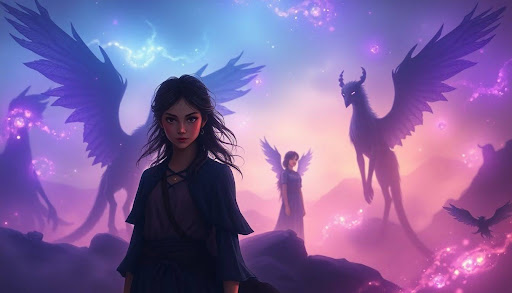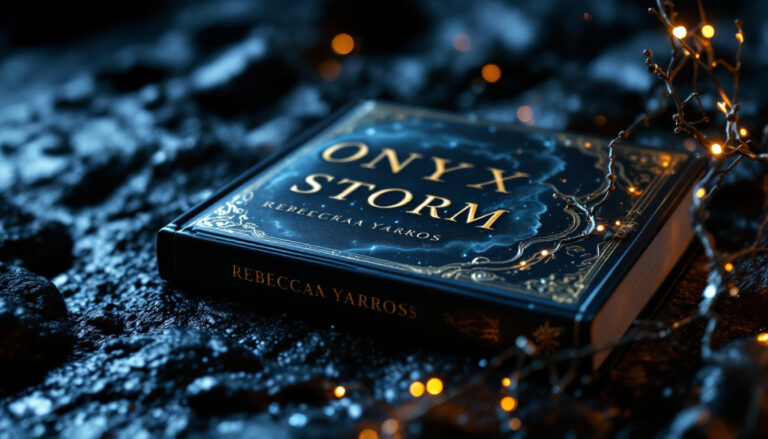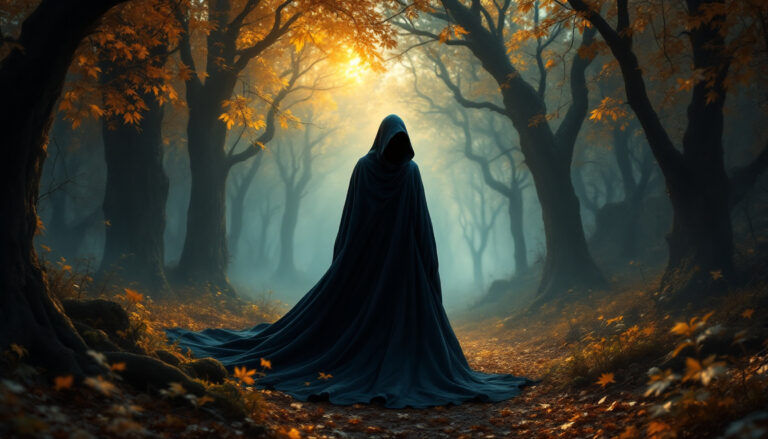The Midnight Library by Matt Haig – A Thought-Provoking Review
Imagine being able to explore every choice you didn’t make in your life. That’s the intriguing premise of The Midnight Library by Matt Haig. The story centers around Nora Seed, a woman overwhelmed by regrets and disappointments. After a life-altering moment, she finds herself in a library filled with books representing the countless paths her life could have taken.
This book invites readers on a journey through emotional depth, challenging the way we view our choices. Haig weaves themes of regret, possibility, and the search for meaning. As Nora tests out alternate versions of her life, readers are prompted to reflect on their own decisions. Whether you’re an avid reader or just getting started, this review will break down Nora’s journey and explore the powerful lessons hidden within the pages.
Overview of The Midnight Library
The Midnight Library by Matt Haig offers a unique exploration of life choices and the weight of regret. It pushes readers to consider how their paths might have diverged, questioning what truly defines a fulfilling life. Let’s dive into the vital aspects that shape this engaging narrative.
About the Author
Matt Haig is a British author known for his captivating storytelling and insightful explorations of human emotions. Born on July 3, 1975, he has written a range of novels for adults and children, often tackling themes of mental health, existentialism, and the nuances of living a meaningful life. His writing style is approachable, blending humor with profound philosophical questions. Works like Reasons to Stay Alive and How to Stop Time have garnered both critical acclaim and a dedicated readership. For more on his journey and other works, you can check out about Matt Haig.
Plot Summary
At its core, The Midnight Library follows Nora Seed, a 36-year-old woman grappling with a mountain of regrets. Faced with the idea that her life hasn’t turned out as she hoped, Nora finds herself in a mysterious library that exists between life and death. This library houses books containing alternate versions of her life, each representing a different choice she could have made. As Nora navigates these alternate realities, she begins to understand the complexities of her decisions and the ripple effects they produce. If you want a detailed breakdown, you can read the full plot summary on SparkNotes.
Main Themes
The novel delves into several key themes that invite introspection and conversation:
- Regret: Nora’s journey is a direct reflection of common human feelings of regret and what-ifs. She grapples with the choices she’s made, illuminating how regret can shape our lives.
- Acceptance: The story emphasizes coming to terms with one’s life choices. As Nora explores alternate versions of her existence, she learns that acceptance is vital for peace and happiness.
- Importance of Choices: The narrative powerfully conveys that every choice leads to a new path. It explores the idea that while we can’t change the past, we can learn from it and make better decisions going forward.
For a more in-depth discussion of these themes, visit Gradesaver’s analysis. Each theme resonates with readers, encouraging them to reflect on their lives and choices, ultimately making this novel a thought-provoking read for anyone.
Through these dimensions, The Midnight Library not only tells a story but also connects with readers on a personal level, prompting them to think about their own life choices and the possibilities that lie ahead.
Character Analysis
The Midnight Library presents a rich tapestry of character development, primarily focused on Nora Seed and the individuals who shape her journey. Understanding the characters enhances the experience of the narrative, making it more relatable and immersive.
Nora Seed’s Journey
Nora Seed’s journey is central to the story. At the beginning, she is a woman engulfed by regret, feeling trapped under the weight of her life choices. Her initial despair propels her into the Midnight Library, where she can explore alternate versions of her life. Each book represents a different choice, a different path she could have taken. As she flips through these pages, we see her transform.
Initially, Nora is heavily influenced by her harsh self-critique and societal expectations. She believes her life is defined by missed opportunities, which leads her to deep unhappiness. However, as she experiments with various lives, she begins to uncover the complexity of joy and fulfillment.
For example, in one life, she becomes a successful rock star, embracing fame and love. In another, she explores a simpler life as a glaciologist, connecting deeply with nature. With each experience, Nora learns vital lessons about herself and the vast array of human experience. This diversity in her choices reveals that fulfillment comes not from following societal standards but from appreciating one’s path.
As the story unfolds, Nora shifts from self-doubt to a more nuanced understanding of life. She realizes that every experience, even the painful ones, contributes to personal growth. This shift is evident when she starts to embrace her past, recognizing that her choices do not solely define her worth. By the end, Nora embodies resilience, acceptance, and a newfound appreciation for life’s unpredictable journey. For a more in-depth character analysis of Nora Seed, check out this detailed breakdown.
Supporting Characters
Supporting characters play a crucial role in Nora’s transformation. Each character introduces different perspectives and reflections that prompt her to reconsider her views on happiness and regret.
- Mrs. Elm: As the librarian, she serves as Nora’s guide throughout the Midnight Library. Her wisdom helps Nora navigate her choices, providing insight into the importance of self-acceptance and forgiveness. Mrs. Elm embodies the idea that everyone has their path to discovery.
- Joe Seed: Nora’s brother represents familial connections and the ties that can sometimes weigh us down. His relationship with Nora reveals the complexities of sibling dynamics and the challenge of living up to expectations, helping her see the value in family bonds.
- Dan Lord: This character highlights the theme of love and missed opportunities. In some of Nora’s alternate lives, the love she experiences with Dan shows how connections can define our happiness. It reminds Nora that fulfillment often comes from the people we share our lives with.
- Hugo Lefèvre: A character from one of Nora’s alternate lives, Hugo symbolizes the pursuit of passion and the risks one must take to find true joy. His influence reflects that taking chances can lead to unexpected happiness and meaning.
These supporting characters not only enrich Nora’s journey but also allow readers to see various aspects of life. They provoke Nora’s introspection and ultimately guide her toward realizing that life is not just about choices but about the connections we build along the way. To dive deeper into the supporting characters of The Midnight Library, you can explore this character list.
Writing Style and Tone
In The Midnight Library, Matt Haig employs a distinctive writing style that blends vivid imagery with straightforward language. This approach not only makes the narrative highly accessible but also deepens the emotional connection between the readers and the story. Haig’s ability to articulate complex themes through simple yet powerful prose invites readers to engage fully with Nora Seed’s journey of self-discovery.
Imagery and Language
Haig masterfully uses vivid imagery throughout the novel, bringing to life the unique worlds within the Midnight Library. For instance, when Nora opens a book to explore an alternate life, readers are treated to rich details that stimulate the imagination. Whether she’s experiencing the exhilarating highs of being a rock star or the serene beauty of a glaciologist, each scene is painted with clarity.
The language is refreshingly simple, making the often heavy themes more digestible for a wide audience. Haig avoids jargon and elaborate vocabulary, choosing instead to express profound thoughts through everyday language. This helps foster a sense of familiarity, encouraging readers to reflect on their own lives as they follow Nora’s path. Readers can further explore Haig’s writing style in this detailed analysis.
Emotional Impact
The emotional tone of The Midnight Library resonates deeply with readers. Haig’s writing balances moments of despair and hope, effectively mirroring Nora’s own journey. The tone is often introspective, inviting readers to pause and consider their own regrets and dreams. This reflection is powerful and often leads to a heightened emotional engagement with the story.
Nora’s struggles with depression and feelings of inadequacy are portrayed with sensitivity, making her experiences relatable. The tone shifts gracefully from dark moments to moments of joy and discovery, echoing the complexities of real-life emotions. The portrayal of mental health issues, as discussed in this insightful piece, illustrates how the narrative fosters empathy and understanding among readers.
By skillfully weaving together imagery, relatable language, and an emotionally charged tone, Haig creates an environment where readers don’t just witness Nora’s journey; they feel it. The result is a book that lingers long after the final page is turned, leaving readers reflecting on their own choices and the possibilities that lie ahead.
Personal Reflections
The Midnight Library by Matt Haig resonates deeply with many readers, drawing them into a world of introspection through Nora’s journey. As readers engage with her experiences, they may find threads of their own lives woven into the narrative.
Relatability and Lessons Learned
Nora Seed’s life is filled with choices and regrets, a universal experience that many readers can relate to. Her struggles mirror the internal battles that countless individuals face. Each decision she confronts invites readers to reflect on their own lives and consider how different they may look based on the forks in the road they’ve encountered.
Consider these insightful lessons embedded in Nora’s journey:
- Embrace Imperfection: Nora learns that life doesn’t have to be perfect to be meaningful. This revelation speaks to anyone who feels weighed down by societal pressures or expectations.
- Choices Shape Us: The book emphasizes that every decision impacts our trajectory, but it also reassures readers that mistakes are part of the journey. It’s a reminder that it’s okay to feel lost at times.
- The Power of Regret: Acknowledging regret is an essential step towards healing. Nora’s experiences illustrate that while regret can be heavy, it can also lead to personal growth and transformation.
- Acceptance of Self: Ultimately, Nora finds peace through self-acceptance. This theme resonates, encouraging readers to embrace who they are, flaws and all. For more reflections on these lessons, visit Reflections on ‘The Midnight Library’.
These themes connect deeply with a diverse audience. Readers who might feel trapped in their choices find solace in Nora’s journey, making the story all the more powerful and relatable.
Impact on Mental Health Discussion
Haig’s novel does not shy away from addressing mental health, an aspect that significantly impacts its reader base. Nora battles depression and suicidal thoughts, making her experiences painfully relatable for those struggling with similar issues.
The book touches on vital themes surrounding mental health, including:
- Stigma Reduction: By portraying mental illness candidly, The Midnight Library helps dismantle stigma. It highlights the reality of living with mental health struggles, encouraging empathy and understanding. For a deeper dive into this aspect, check out The Midnight Library by Matt Haig (Mental Health).
- The Importance of Conversations: The narrative sparks discussions about mental health, shedding light on how depression affects decisions. This openness fosters a community where readers feel safe to share their experiences.
- Hope and Recovery: Haig’s portrayal of Nora evolving from despair to acceptance offers hope. It illustrates that recovery is possible, and even in dark moments, life can be richly fulfilling.
Through these discussions, The Midnight Library serves as a valuable resource for readers. It not only entertains but also educates, showcasing the profound impact of mental health on personal choices and overall well-being. For more insights on this topic, you can explore Book Review: The Midnight Library by Matt Haig.
Nora’s reflections and struggles mirror real-life challenges, drawing readers into a conversation that many have been longing for. The threads of relatability and mental health awareness woven throughout the story highlight its profound significance in today’s world.
Final Thoughts
As you wrap your mind around The Midnight Library, the overall message shines through vividly: life is a collection of choices, and every choice has its significance. Matt Haig illustrates that while we often grapple with regrets, it’s crucial to find meaning in our experiences, even the painful ones. Nora Seed’s journey emphasizes that it’s never too late to seek happiness and self-acceptance.
The Essence of Choice
The concept of choice is pivotal in this narrative. Each book Nora opens in the library represents a different path, reminding us that life is not about the “right” or “wrong” choices but about understanding ourselves through those decisions. This provocative idea invites readers to reflect: how do my choices shape my life? What paths do I wish to explore?
To further explore the themes surrounding choice and existence, consider visiting SparkNotes: The Midnight Library Themes.
Embracing Regret
Regret is a natural part of life. However, rather than allowing it to define us, the novel encourages embracing these feelings as part of our growth. Each regret Nora faces reveals valuable lessons she learns along the way. It’s a reminder to recognize our past but not let it overshadow our present.
For more insights on the themes of regret, check out Enotes: The Midnight Library Themes.
Finding Hope and Connection
Ultimately, The Midnight Library is a story about hope and connection. It highlights the importance of relationships and how they enrich our lives. Through her adventures, Nora learns that happiness often resides within our connections to others.
The emotional impact of the book resonates long after finishing it. It serves as a conversation starter about regret, mental health, and the beauty of life’s unpredictability. For a deeper analysis of the emotional aspects, visit Gradesaver: The Midnight Library Themes.
Engage with this captivating story, and you may find it inspires not just your next read, but also a shift in how you view your life choices.
Conclusion
The Midnight Library by Matt Haig offers a profound look at life choices through the lens of Nora Seed’s experiences. Each journey through an alternate life reveals deep insights about regret, acceptance, and the importance of connections.
Readers are left with valuable lessons about embracing life’s imperfections and understanding that it’s never too late to seek happiness.
This book is not just a story; it’s an invitation to reflect on your own choices and paths.
If you haven’t picked it up yet, consider diving in. You may find yourself pondering your own life decisions in a new light.
What choices have shaped who you are today?







